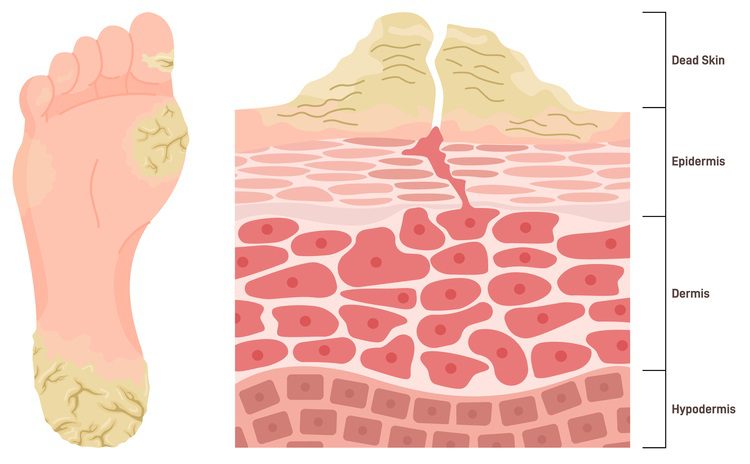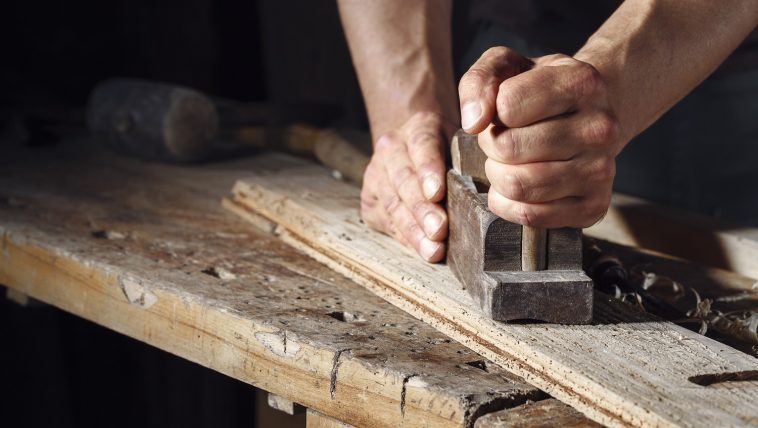[Originally published as The Evolution of Calluses]
Today most people in our modern world try to avoid calluses on their skin as unwanted or unsightly. Where I grew up and when (in the 1950s and 1960s), calluses on the hands were considered a good thing. They showed that the person with the calluses was an industrious worker.
From the age of twelve or so until college, I always had calluses on my hands that I valued as badges of honor for my hard work in the field or shop. However, I was never as “tough” as my dad, who worked 60-hour weeks in the machine shop. While gloves were an option, they were expensive and bulky, and not applicable for every task. To my family, it was a well-known fact that calluses prevented blisters. Once I graduated from college, I quickly became a “softy” except for the spot on my middle right finger that was the result of my writing with a pen or pencil.
In those days, it was common for kids to go barefoot, especially in the summer, but I hated doing that because it was so painful walking and running on the ever-present gravel, stones, and brambles. I never witnessed adults going barefoot outdoors much unless they were swimming. And so I never developed any noticeable calluses on my feet. In my culture at that time, people who habitually went barefoot were considered backward or poor.
What is the medical definition of a callus on the skin? Wikipedia defines a callus as
an area of thickened skin that forms as a response to repeated friction, pressure, or other irritation. Since repeated contact is required, calluses are most often found on the feet and hands, but they may occur anywhere on the skin. Some degree of callus, such as on the bottom of the foot is normal.
The Mayo Clinic definition seems a bit strange to me: “Calluses are thick, hardened layers of skin that develop when your skin tries to protect itself against friction and pressure.” According to the Mayo Clinic definition, our skin has the ability to think and react like a sentient being.

In the Wikipedia article on calluses, they re was a warning note at the top of the article that there was a problem with the article because there was no information on evolution. Of course, that note is no big surprise to us, but it is a strong reminder of the worldview held by Wikipedia. Thus the title of this article.
What can be said about the evolution of calluses?
Did humans evolve this ability for our skin to protect itself from friction and pressure?
At what point did this ability evolve, and what would cause it to develop?
Since many areas of our skin have the ability to develop calluses, but only those areas on those individuals that have friction and irritation would ever need a callus, why would a particular generation develop the ability over a large area of skin never subjected to friction or irritation?
Assuming a Loving Designer Instead
 The biblical Christian worldview has the ability to more easily explain this as the engineered system it looks to be. Adam and Eve were created at the beginning of time, perfectly built in a perfect garden. They initially had no need for clothing (or gloves, or shoes). Perhaps calluses would have been helpful for the first two people as they worked in the garden. And, after the fall and the institution of the curse (along with thorns and other irritants), these new conditions would definitely make developing calluses an advantage.
The biblical Christian worldview has the ability to more easily explain this as the engineered system it looks to be. Adam and Eve were created at the beginning of time, perfectly built in a perfect garden. They initially had no need for clothing (or gloves, or shoes). Perhaps calluses would have been helpful for the first two people as they worked in the garden. And, after the fall and the institution of the curse (along with thorns and other irritants), these new conditions would definitely make developing calluses an advantage.
Conclusion
In the beginning, it would make sense that God anticipated the need for calluses and engineered human skin to have this marvelous capability. In the creation worldview, calluses did not evolve but were engineered in the beginning for our benefit here on this earth. The curse means that the ability of our skin to make calluses may not always work perfectly, just as with all of our other biological systems that we need but often take for granted.
There is no believable evidence that would indicate calluses are the result of evolution.
Glory be to the Creator God.






